Resources

Originally, I was planning to write about “decolonizing”—our syllabi, our curriculum, our teaching. I had a title and everything. Thankfully, though, a colleague reminded me of Tuck and Yang’s important article “Decolonization is Not a Metaphor” (2012) and their argument that “decolonization brings about the repatriation of Indigenous land and life; it is not a metaphor for other things we want to do to improve our societies and schools.” In a related post entitled “Do Not ‘Decolonize’… If You Are Not Decolonizing: Progressive Language and Planning Beyond a Hollow Academic Rebranding,” Nayantara Sheoran Appleton writes of how “decolonizing has been co-opted from a vibrant and critical engagement to an academic buzzword” and how such hollow engagement is “sloppy and opportunistic.” Ouch. And . . . she was right. I was planning to use “decolonization” in this more metaphorical sense, because it’s a popular term right now, but with no intention, as Tucker and Yang write, of mentioning “Indigenous peoples, our/their struggles for the recognition of our/their sovereignty, or the contributions of Indigenous intellectuals and activists to theories and frameworks of decolonization.” I’m thankful for this kind of “call in.” Okay, so what was I actually trying to write about then? Fortunately, Appleton offers labels for other valuable pedagogical efforts we might be pursuing (all, delightfully, d-words too): “diversify your syllabus and curriculum; digress from the cannon; decentre knowledge and knowledge production; devalue hierarchies; disinvest from citational power structures; and diminish some voices and opinions in meetings, while magnifying others.” Aha. It turns out what I was trying to work on was diversifying. In these efforts, I am guided by this “Inclusion by Design” tool, a worksheet for surveying your syllabus and course design, which was created by some of my very favorite colleagues (and which they’ve helpfully summarized in this Faculty Focus). Some questions from this self-evaluation tool that I use to critically examine my own teaching include: To what extent do some of the learning objectives aim at diversity- or inclusion-related knowledge, skills, or attitudes? To what extent do teaching activities meet the needs of diverse learners . . . ? To what extent do the course materials, such as readings, provide a full spectrum of perspectives on topics? To what extent does the course material represent a variety of voices? What unwritten messages does the syllabus convey about the course, content, and learning? Is there a “hidden curriculum” embedded in the syllabus? I appreciate the wide range of considerations that the tool offers here, from learning outcomes to teaching activities to course materials to even what might be “hidden.” In our course materials, it’s far too easy to march a parade of white, “Western,” men in front of our students: Durkheim, Eliade, Frazer, James, Tylor, Girard, Marx, Freud, Weber, Geertz, Smart, Tweed, J.Z. Smith, Wilfred Cantwell Smith, Huston Smith, all the Smiths. How can I move beyond, or offer critiques of, this “canon,” to allow my students to consider other important contributions to (and omissions or silences from) the field? In my assignments, how do I privilege certain ways of knowing or representing that knowledge and how can I do differently? Do I inadvertently embody the characteristics of white supremacy culture, such as worship (no pun intended!) of the written word, in the way I organize class discussions, arrange our schedule, create my rubrics? And, of course, questions about my particular syllabus or learning environment can’t help but lead me to reflect on our field, as a whole. It’s no secret that theology and religious studies have some Christian, colonial baggage. (I like assigning the first part of this Schilbrack article to students on this very point.) There are no easy answers for any of us here—and I don’t imagine that I’ll have this all sorted out in the next month, by the time the new academic year begins. What I am committed to is this kind of critical examination and the diversification—not yet the decolonization—of my own teaching. Will you join me?
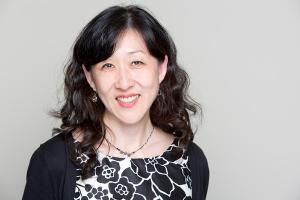
Education is the process of learning and knowing, an undertaking unrestricted to our schools, curriculums and textbooks. Rather, it is a holistic process that continues all throughout our lives. Even mundane, regular events and occurrences around us are educational in some way or another. It wouldn’t be an overstatement to say that our lives without education would be stagnant, hollow even. No change would occur, no milestones would be reached. We would float in the same place without meaning. Thus, we organize the dissemination of knowledge not just to give meaning to others, but to ourselves. When we educate a person, we can shift a world; to educate a person, passes on meaning from one person to the next; to educate a person, changes the world. Teachers possess such a power. We teachers and professors should find immense meaning in our work—especially when the role has been recently reconstructed to something radically new. We must challenge ourselves to find inspiration again during a time when teaching and education has been entirely digitized to muted chatrooms and emails, forcing the traditional to become innovative, and the personal to become impersonal. In this moment when the comforts and familiarities of regular life has been put on pause, and slowly started again, we reflect on how to make use of the sudden changes brought on during the pandemic. The fervent discussions about race in America remain at the top of our concerns. It’s timely that attention to the racial and economic divide during the crisis have turned this omnipresent national issue into an urgent and revolutionary world protest given that Covid-19 cases and deaths have targeted black and brown communities. It reminds professors that we cannot forget to tackle basic struggles, and inform others that such a struggle even exists. We must teach our students to be actively anti-racist, and even further, to understand how racism intersects with other forms of prejudice to create stronger forms of discrimination. Be it one’s gender, body type, economic status or sexual orientation, we must remind ourselves and our students that no one issue stands alone, but converges with others. Susan Shaw and I co-wrote a book, Intersectional Theology which talks about how there are no single axis issues, but multiple axis issues. Our identities are not dimensional but multi-dimensional; we understand ourselves through the very personal experience of our gender, sexuality, ethnicity, ableism, class etc., One’s identity is the converging of multi-axis identities. These identities all shape us and define who we are. But these identities are also points of justice as racism, patriarchy, homophobia embed themselves in the fabric of our society. In doing intersectional theology, we recognize that it comes with the requirement to create social justice. In the same way, we want our teaching to be meaningful, to address social issues and to further justice. How can we do this? The books that we need to advocate for students to read must be racially and gender diverse, written by a diverse breadth of writers, covering a diversity of perspective and subject matters. The history of theology is mostly written by men. It is crucial that we listen to voices other than white men’s to get a deeper and more expansive theological understanding. Therefore, pedagogically, we need to urge students to read non-white books[1]. We can strategically put them in our syllabus, include authors of color whose work touch on justice, and also select them for their assignments. Projects in class and outside the class can also incorporate social justice elements. I know in some seminaries and colleges, service learning is part of the curriculum. In those schools, part of the justice work is included in the courses throughout their studies. Early on in our schooling we are required to volunteer or participate in service learning, however this idea of justice work should also be upheld by professors in later education, adjusting the work for students studying for their bachelor’s, Master’s, or higher. Whoever the student or professor, whatever the format, setting or institution, informing and encouraging students to promote justice should be lifted as one of the highest priorities in our teaching. Going forward, we can utilize social media as a vital tool to share information and ideas. We can encourage students to blog (for their seminary, church or denominational blogsite), share, or write social justice posts. Social activism on the internet can be a powerful source of information sharing, encouragement and engagement. Political petitions are shared online, protest events are shared and organizations who do the work can also be shared. These elements can be tied into the course content and assignments. Another powerful tool is the media: movies, videos, music, etc. which used in teaching can make for a more poignant, dynamic tactic to promote social justice. I have used movies such as “Sophie’s Choice,” “God on Trial,” and “The Mission” to raise awareness of the social injustices such as anti-semitism, slavery, and colonialism and how to move forward. As we continue to teach during a pandemic, we can harness all the tools we have available online to express our plights, our activism, and our hopes for the uncertain future. We can be motivated by the challenges of virtual learning, and develop new ways to encourage community engagement, even at a distance. Community building, church building can be done online as COVID-19 continues to spread and spike across the United States. The professor has essential power not just in the classroom, but for the next generation. If the professor can also exemplify what they teach in their own lives, it will make a stronger impact in the classroom. Practice what you preach can also apply to practice what you teach. Teaching should be meaningful and substantive—but above all, it should be transformative. Let yourself be open to the quiet, and grand transformations in the everyday; the ones that shift your consciousness and provide an experience to learn from and be shared. In this way, we, as professors and learners, can continuously provide pieces of wisdom to promote justice and demand change. [1]A few examples of books to consider reading and adding to your syllabus: De La Torre, Miguel, Burying White Privilege, (Grand Rapids:Eerdmans, 2018) Cone, James, The Cross and the Lynching Tree, (Maryknoll: Orbis Books, 2011) Kim, Grace Ji-Sun, Embracing the Other (Grand Rapids: Eerdmans, 2015) Townes, Emilie, Troubling in My Soul, (Maryknoll, Orbis Books, 2015)
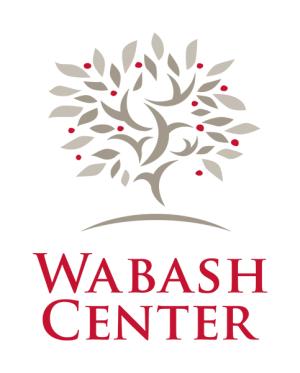
Minority faculty at predominantly white institutions (PWIs) should be keenly aware of the controversial nature of teaching about race. Black faculty who teach about race must simultaneously manage contentious conversations about racism against Black people, while also being confronted with the stereotyped biases of racially-primed white students toward them. Addressing common objections white students may bring into the classroom requires creating space for dialogue and critical engagement. Common issues range from ambivalence, racial colorblindness, white fragility, to white supremacist ideologies. Asian, Black, Indigenous, Latinx, and other minority students in PWI classrooms may be reluctant to speak up or participate for any number of reasons. Research has shown that students in a majority white environments tend to downplay ethnic and cultural differences. Research has also shown that minority status in PWIs often comes with additional stress due to racism, discrimination, interracial conflict, lack of support and representation, sense of alienation, or an unwelcoming campus environment. Appealing to the institutional identity, history, and demographics of your institution helps to frame the classroom conversation. PWIs do not exist in a vacuum or on an even playing field. They have particular cultures and histories based on the community in which they are embedded. Framing conversations about race within local systems facilitates a historical understanding of racial disparities. If students can see the inequities of race in the immediate context of their own school, neighborhood, and city, the chances of creating a sympathetic learning environment are much greater. Since the Bible has been used to promote the ideology and practices of racism, an important pedagogical move is to identify the biblical and theological roots of the problem. This history is important to tell, expose, and dismantle, particularly in a Christian PWI and perhaps especially in a biblical studies classroom. Minority faculty should be mindful of striking a balance between a persuasive teaching style and difficult conversations, especially when addressing the hard truths about systemic racism. Faculty and administrators at PWIs must seek to understand the nature of negative assessments made by students of Black faculty. Tenure and promotion for Black faculty are often threatened by negative evaluations by white students who perceive them as anti-white especially when discussing Blackness or anti-Black racism. Some Black faculty may experience psychological discomfort when teaching at PWIs. By virtue of the limited numbers of other Black faculty on campus, you may be more visible to other colleagues and students. Some find this hyper-visibility uncomfortable. These dynamics might make you feel compelled to constantly monitor yourself or avoid social situations altogether. Building a strong inter-minority coalition with colleagues inside and outside of the walls of your institution is highly recommended for all faculty of color. Working in your institution requires working on your institution. This is especially true for minority faculty who are committed to creating a culture of diversity and inclusivity at PWIs. Minority faculty should be aware of the impact of racial battle fatigue. In addition to managing course loads, committee meetings, research agendas, and student issues, Black faculty use additional energy to fight microaggressions, overt racism, and institutionalized racism. The effort that it takes becomes emotionally, physiologically, and psychologically distressing. This is racial battle fatigue, and it can lead to a reduced sense of well-being for Black faculty. It is imperative that Black and other minority faculty practice good self-care to mitigate the negative impact of racism and racial battle fatigue. According to Quaye et al. (2019), self-care strategies for Black faculty to consider include “unplugging from people and places that cause them harm, building community with other Black educators, caring for their bodies, finding safe spaces, and using counseling.” References Alexander, R., & Moore, S. E. (2008). The benefits, challenges, and strategies of African American faculty teaching at predominantly White institutions. Journal of African American Studies, 12, 4-18. Arnold, N. W., Crawford, E. R., & Khalifa, M. (2016). Psychological heuristics and faculty of color: Racial battle fatigue and tenure/promotion. The Journal of Higher Education, 87, 890-919. Bailey, Randall C., Tat-Siong B. Liew, and Fernando F. Segovia, eds. (2009). They Were All Together in One Place: Toward Minority Biblical Criticism. Atlanta: Society of Biblical Literature. Chancellor, R. L. (2019). Racial Battle Fatigue: The Unspoken Burden of Black Women Faculty in LIS. Journal of Education for Library and Information Science, 60, 182-189. Daniel, B. J. (2019). Teaching while Black: Racial dynamics, evaluations, and the role of White females in the Canadian academy in carrying the racism torch. Race Ethnicity and Education, 22, 21-37. JBL Forum on Black Lives Matter for Critical Biblical Scholarship (2017). Journal of Biblical Literature 136.1: 203-244. Nasrallah, Laura and Elisabeth Schüssler Fiorenza (2009). Prejudice and Christian Beginnings: Investigating Race, Gender, and Ethnicity in Early Christian Studies. Minneapolis: Fortress Press. Pizarro, M., & Kohli, R. (2018). “I stopped sleeping”: Teachers of color and the impact of racial battle fatigue. Urban Education, 1-25. Quaye, S. J., Karikari, S. N., Rashad Allen, C., Kwamogi Okello, W., & Demere Carter, K. (2019). Strategies for practicing self-care from racial battle fatigue. Journal Committed to Social Change on Race and Ethnicity, 5, 95-131. Resources on Racism, White Supremacy, and Black Lives Matter Smith, W. A. (2004). Black faculty coping with racial battle fatigue: The campus racial climate in a post-civil rights era. In D. Cleveland (Ed.), A long way to go: Conversations about race by African American faculty and graduate students. Peter Lang Publishing, Inc., 171-190.

Teaching in a two-person religion program at a liberal arts college means you have the opportunity to teach in your field of study, and also in other areas of interest and expertise. It also means your students range from majors and minors to those seeking a general education course. For me, this has meant I teach primarily courses on various religious traditions, including Islam, Qur’an, Asian Religions, and now one on Islamophobia, as well as writing seminars around the topics of gender and race. While the content of these courses lend themselves to discussions that fall under the category of “other,” “diversity,” and other codes for non-dominant traditions, I would argue that the way we teach this content matters as much as, if not more so than, the content itself. To that end, I think a diversity-infused course should not be measured by its content so much as how that content is conveyed. I wish I could say that I knew this, or knew how to accomplish this, when I began my teaching career, especially as it seems so obvious to me now. As luck would have it, a few years ago I coordinated a workshop with a colleague on “demystifying diversity in the classroom,” and we brought Kyana Wheeler and Fran Partridge to help moderate our conversations. In that context, I learned how better to talk about race, whiteness, and white fragility, and I gained some techniques for creating classroom spaces where these conversations could take place. Both in terms of pedagogy and interpersonal connections, it was one of the most eye-opening and liberating experiences that I have had. The facilitators introduced us to a couple of exercises that had us examine our own position in society. We filled out worksheets identifying the various “isms” including sexism, ableism, just to name a few. Additionally, we identified privately our own places of privilege and those of oppression, for example, based on gender, sexuality, and socioeconomic status. Of note, Kyana Wheeler did not include race in these exercises and when we had finished our intense and engaged discussions, she asked us to add the layer of race and note how much worse the discrimination would be. All of this took place after we had privately taken implicit bias tests online. Leaving race out until the end for a group of predominantly white instructors was for me a very powerful demonstration of not only our own positions in the world, but how we talk about race, racism, whiteness, white fragility, and white privilege. The bottom line is we don’t; and we are very uncomfortable when we do. In the semester following this workshop, I taught a first-year writing class under the theme of white fragility focusing on issues of race and gender. In addition to readings on whiteness, white fragility, and doing race, we engaged in discussions about the book, Pushout: The Criminalization of Black Girls in Schools, by Monique W. Morris. The students, predominantly white, engaged in conversations about the intersectionality of race and gender. We were able to do so toward the end of the semester with minimal defensiveness, I think, because we had engaged in the exercises described above in the first half of the course. Rather than thinking of them as one set of exercises to set the tone for the course, I conducted these self-awareness practices throughout the course as reminders of our own positionality. During the first week, the students engaged in identifying the oppression at work in particular scenarios. Another week, they took implicit bias tests. A week later, they engaged in discussions about where they felt privilege and oppression. I borrowed the technique of leaving out race until the end. It seemed to work. Currently I am working on a course on Islamophobia and want to move away from catering to white privilege or the comfort of non-Muslim students. Based on a second takeaway from the summer workshop, specifically that race and racism are the most powerful underlying factors of most if not all forms of oppression, I believe a course on Islamophobia must engage in discussions of anti-racism. I have decided to take the tools of self-examination with respect to race and racism that successfully created a space for critical discussion of the plight of black girls in the US school and prison systems, to a course that teaches against Islamophobia. Furthermore, I believe that any course, even ones that don’t deal explicitly with racism or other forms of oppression would benefit from these activities as they help us to understand our place in the conversations, and who we might be leaving out.
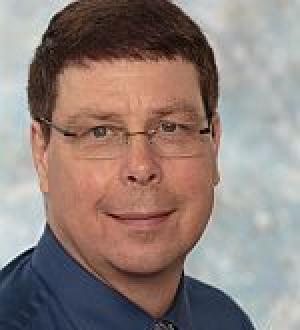
Thanks to the collegiality of Dr. Mitzi J. Smith and the generosity of the Wabash Center, I have the opportunity to engage in learning that moves beyond professional development to include personal transformation. This summer I will participate as a learner in an intensive that Mitzi will teach on The Gospel of Luke and African-American Interpretation. Mitzi is J. Davidson Philips Professor of New Testament at Columbia Theological Seminary and a leading womanist biblical scholar. She and CTS have graciously agreed to include me and 21 students from Bethany Theological Seminary and Earlham School of Religion in the course. Mitzi and I are also co-directing a Wabash Center small grant project titled, “The Challenges and Effective Pedagogy of a Trans-Contextual Online Collaboration for an African-American/Womanist Hermeneutics Course during Covid-19.” Dr. Marcia Riggs (also of CTS), and Dr. Mary Hess (Luther Theological Seminary) have joined the project as consultants, bringing expertise in the areas of ethics and education. The grant creates space for us to reflect on pedagogy and social justice in ways that go beyond our usual reflective practice. This blog is a way to make our learning public. Both the course and the grant project feel challenging to me--a white, straight, cisgendered male with a history of privilege. Unlike Mitzi and many of my students, I have not experienced biblical texts being used as a basis for marginalizing me, requiring me to be submissive because of my gender, or excluding me from leadership. In most churches I have attended, it is socially acceptable to ignore biblical texts that challenge my middle-class lifestyle, such as Luke 14:33. Students in my courses are welcome to “talk back” about the Bible with or without the “sass” that Mitzi encourages;[1] I, however, have been more inclined to emphasize that New Testament texts are inspiring and worthy of careful study despite their flaws. Mitzi’s hermeneutics of suspicion may challenge me to critique biblical interpretations and texts more assertively in light of core biblical values such as justice, mercy, and love. My approaches to hermeneutics and pedagogy have long emphasized inclusion of a wide diversity of interpreters with the understanding that Jesus often speaks through people who have been marginalized. My revised introductory survey course is now titled “Reading the New Testament Contextually,” and it includes True to Our Native Land as essential reading.[2] I am fluent enough to teach in Spanish and have enjoyed leading bilingual intercultural hermeneutics seminars in Puerto Rico and California. I have also had the privilege of team teaching with several Nigerian scholars through video-linked classrooms in Jos, Plateau State, and Richmond, Indiana. Those efforts, however, have not qualified me to foreground the experiences of African-American communities in all the ways that justice, love, and good teaching require. In order to understand and embody Jesus’ teaching faithfully in this time, I need to recognize the disproportionate impact of Covid-19 on communities of color, especially on African-American communities. I need to speak out more forcefully against the discriminatory police violence that has continued unabated even as other activities shut down for the pandemic. I need to engage more deeply with African-American neighbors and biblical interpreters in order to hear what Jesus is saying now through them and through scripture. And I need to step up efforts to recognize and confront racism in myself as well as in society. In a recent consultation, Mitzi, Marcia, Mary, and I exchanged ideas for helping students become aware of their own contexts and identities, including their experiences of race. Marcia reminded us that storytelling rooted in personal and communal experience is an essential practice of womanist theology. Mary and Marcia each suggested prompts that could encourage students to write thoughtfully about the identities and experiences they bring to a course in African-American and womanist biblical interpretation. For example, “What are systemic patterns of racism that you observe in general society today? How do you participate (even inadvertently) in these patterns?”[3] We agreed that it is important for both students and professors to know their contexts, to remember their own stories, and to tell them in ways that create space for honest conversation. I plan to share more of my story and learning as the project continues, and I look forward to interacting with posts by Mitzi and other participants. As a reader of this blog, your constructive comments are also welcome as we journey together toward deeper understanding. Read about Mitzi Smith's Experience with Dan Ulrich [1] See Mitzi J. Smith, Womanist Sass and Talk Back: Social (In)Justice, Intersectionality, and Biblical Interpretation (Eugene, OR: Cascade Books, 2018); also Mitzi J. Smith and Yung Suk Kim. Toward Decentering the New Testament : A Reintroduction (Eugene, OR: Cascade Books, 2018). [2] Brian K. Blount, ed. True to Our Native Land: An African American New Testament Commentary (Minneapolis: Fortress Press, 2007). [3] Rima Vesely-Flad, “‘Saying the Wrong Thing’: Experiences of Teaching Race in the Classroom,” Spotlight on Teaching, Religious Studies News (November 5, 2018), https://rsn.aarweb.org/spotlight-on/teaching/anti-racism/saying-the-wrong-thing, accessed June 18, 2020.
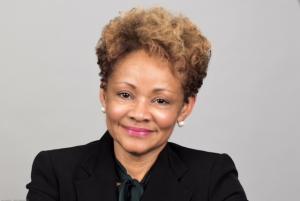
[su_youtube_advanced url="https://www.youtube.com/watch?v=8JR_5IQlhxk&feature=youtu.be"] Last year I participated in a Colloquy at Wabash entitled “Teaching the Black Presence.” Not long after, for the first time in my career, a white male New Testament scholar, Dan Ulrich, approached me about teaching an African American biblical interpretation course for students, primarily white, attending Bethany Theological Seminary in Indiana; for some reason I imagined them to be primarily male. Dan had read and assigned students to read the essays I wrote in True Our Native Land (2007). By Dan’s own admission, he might have been “scared away by the strong hermeneutics of suspicion developed” in my recent work, much of which he has now read for this course. That reflects change. In my experience it is not unusual for scholars in biblical studies to be more familiar with the work of black males than with the scholarship of black females, but that is changing. This collaboration between Dan and me is novel for both of us, and taking it online in the pandemic brings its own challenges. We each carry our own ‘baggage,’ and we are committed to working through it to create a pedagogical experience that will enhance learning for the students enrolled and for ourselves. I am the teaching faculty for the course, the expert in African American and womanist biblical interpretation, although my dissertation and the book I published from it are readings of the Acts of the Apostles. I am a biblical scholar--this is often lost on some colleagues across the academy, as well as students, in my experience. So, as we navigate our way through this course—become acquainted with each other as scholars and human beings—our ‘baggage’ will trip us up at times. But hopefully we will also shed some ‘baggage.’ This is not an easy journey for either of us because of experiences, the ways that we have been socialized in the academy and society, both of which are racialized and gendered in favor of white males and the scholarship they do. We both have been shaped in ways we can and cannot immediately identify. In a meeting during the Colloquy with our consultants (Dr. Marcia Riggs and Dr. Mary Hess), Mary provided feedback to Dan on his first draft blog. It was feedback that I withheld because I did not believe Dan could receive it from me. This is my baggage. After Mary spoke, I confessed that I had a similar impression, but did not want to ‘hurt Dan’s feelings.’ But as I reflect now that was not the reason I withheld my critique. I believed that Dan would not receive my critique, and so why offer it. I was guilty of what I and other black scholars and scholars of color believe (and have experienced) too many white scholars to be guilty of, which is of not providing needed critical feedback to black students and other students of color, of being patronizing and assuming they can’t handle it or are not up to doing the work. I never fail to provide critical feedback to students, regardless of race-ethnicity, gender, sexuality, and so on. But I neglected in Dan’s case to offer useful critique, and my failure was not beneficial to him. I didn’t give Dan the chance to receive my feedback with grace and collegiality until after the white woman scholar offered hers. Going forward I must be honest with Dan, tactful, but honest in offering critique, because he has said he is participating in this collaboration as a learner and peer. This change would reflect neighbor-love informed by a self-love that values critical feedback as necessary for success. As a learner-collaborator, I am grateful for the idea from our consultants to ask students to write more than a two-paragraph statement describing the contexts that impact their selection and reading of a pericope. Our consultants have encouraged me to ask students to write an extended hermeneutical autobiography that will assist them in thinking more critically about their contexts and how culture and social identities, for example, shape them. This collaboration is not easy, but it is giving me life and pedagogical strategies and ideas. Read About Dan Ulrich's Experience with Mitzi Smith
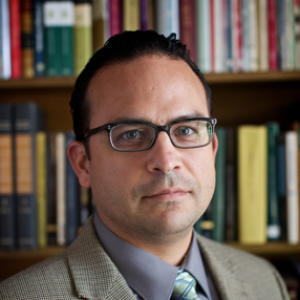
The social justice issue that I have consistently raised in my biblical exegesis courses has been US immigration. As I tell my students—mostly white middle-class Protestants fixed on parish ministry—engaging this topic in a sermon will likely incite some criticism from parishioners or even set in motion a premature resignation. Despite my school’s borderlands location and the exilic content of the Hebrew Bible, pivoting to the topic of US immigration in a biblical exegesis course cannot be done haphazardly. In terms of texts, I find that Genesis (12–50), Exodus, Psalms 120–134, Second Isaiah (40–55) and Lamentations are especially apt for engaging this complex sociopolitical topic. What is unavoidable in these texts are stories about people on the move because of famine, jealousy, conquest, or faith—to name just a few. Yet still, connecting these biblical stories to the lived experiences of migrants in places like the US-Mexico border is by no means a linear process. No matter how convinced I am that Abram’s journey from the Ur of the Chaldeans to the land of Canaan (Gen 11:31) is a migration story, in order to bring my students along I must confront the assumptions that inform their understanding of migration. A common assumption they often have about migration and by extension immigration is that both phenomena represent a social problem or challenge. At the source of this assumption is indeed not an ancient notion of migration but rather their nation-state formation. By contextualizing the latter, students discover that the problems most associated with migration and immigration in US dominant society—like border crossers as “illegal,” economic strains, cultural threats, and spreaders of disease—stem from Western nationalist forms of inclusion and exclusion. After discovering their own nation-state biases about immigrants, I find it easier to shift to the theme of migration in the biblical text, contrasting along the way the ancient assumptions that likely informed it. As opposed to nationalist thinking, the biblical text often starts with the assumption that humans are free to move and that this movement constitutes an act of faith rather than a crime. Emphasizing the freedom of movement and the faith that accompanies it in the biblical text, I then pivot to US immigration and the sociopolitical injustices produced by the nation-state’s control of human mobility. Though migration studies, forced migration studies, and refugee studies are useful resources, their approach to immigration is often based entirely on the modern concept of the nation-state and hence tend to view borders, citizenship, and state sovereignty not as human constructs but as natural to our earthly existence. This nationalist-centric agenda can also be transferred unwittingly over to the biblical commentary material that relies on the social sciences. For this reason, I supplement my immigration bibliography with migrant artwork (See https://artedelagrimas.org/), particularly the kind that emphasizes the freedom of movement and faith as in the drawing below: Dayana, “Mi Jornada (My Journey),” colored pencil and marker, 2014, 9 x 12, Arte de Lágrimas Gallery. Dayana is from Guatemala and was 7-years old when she drew this art piece about her asylum-seeking journey to the US. She and her mother travelled by car and then by bus. She remembered that the road was long and gray (left side). Her picture narrative ends with them crossing the Rio Grande on a makeshift raft (lancha). She first drew the rocks (piedras) in the river and then the river banks. Next, she drew the makeshift raft in the middle of the river with her and her mother inside it. I asked, “Did anyone say good bye to you?” She replied, “My aunt.” She placed her aunt on the Mexican side of the river waving goodbye. I then asked, “Was there anyone else?” Not saying anything, she removed the rosary from around her neck and traced the plastic crucifix over the Rio Grande. She then began to sing the hymn “En la Cruz, en la Cruz, yo primero vi la luz, y las manchas de mi alma yo lavé, fue allí por fe yo vi a Jesús, y siempre feliz con El seré (At the Cross).” Her and her mother sang these words while on the raft. In the drawing the cross is the symbol of faith that accompanied Dayana’s migratory movement across the Rio Grande—the symbol of a territorially bounded state. Like Abram’s story, her faith assumes the freedom of movement.
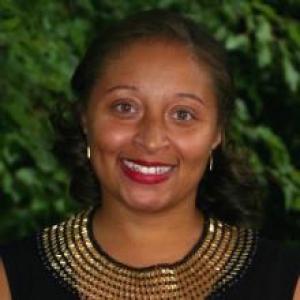
Silence fills the class. No one wants to respond to the question I just raised. From a corner, I hear a student say, “Step it up.” She is looking at a white male student who had been quiet the entire class period. With slight hesitation, he apologizes for his silence. He shares that he has been processing feelings of shame around his whiteness. The room is no longer silent. The learning community delves deeper, peeling back layers of shame other students in the class had also been feeling but fearful to share. Fear is the greatest enemy to justice-seeking conversations in the classroom. It inhibits dialogue and paralyzes transformative learning. Thus, I invite students to name their fears. They fear: saying the wrong thing being misunderstood losing friends crying or exploding with rage in the classroom being seen as the “bad” person discovering that all they grew up believing is a sham. Their fears are justified. Justice-seeking conversations can be like a minefield; risk-free zones do not exist. Promising safe space would be a lie. Justice-seeking conversations need spaces where students can enact courage. Creating these spaces is one of my tasks as a professor. To overcome fear, I invite students on a journey. I tell students that while this course will require intellectual rigor, it will also require emotional rigor. I encourage students to shed false identities and bring their authentic voice into the space. They do not have to perform “wokeness,” nor does ignorance have to invoke shame. Justice-seeking conversations challenge students at the core. Students aren’t just grappling with social justice concepts theoretically; they wrestle with their very identities. I invite that wrestling in the class. I want the class to be a space where they can explore, discover, challenge, reconstruct, and dream of a better world and their participation in that world together. But each of these actions require courage. I imagine my classroom as a stage, one where students are invited to “try on” these new courageous ways of doing and being socially just. Crafting learning covenants together is one pedagogical practice I implement in class to invite accountability and inspire courage. The learning covenant establishes how we engage one another. Emphasizing that my class is a learning community underscores the importance of relationships. The learning community is not just my responsibility, rather, students co-create the space and then help sustain the space through shared governance. It provides a common language of accountability. The covenant invites ownership and enables me to redistribute power to students in the classroom. I too agree to the covenant. My ultimate goal is to create a relational fabric that is thick enough to withstand the discomfort, offense, and pain that might emerge as a result of justice-seeking conversations. When my student says “Step It Up” in the opening, she is simply enforcing the learning covenant. Yet, her speaking up and the student’s response both require courage and mutual accountability. The classroom becomes a site where they can rehearse justice-seeking conversations in a non-hostile way. Lines from past course covenants include: We won’t ask others to take risks that we are not willing to take. We will show mercy rather than condemn. We won’t settle for fear. We will embrace courage, unity, and humility. We give permission for ourselves to be wrong. This space is not solely for the sake of gaining knowledge. This space is designed to equip. We commit to being agents of change when we leave here. It takes time to craft the covenant, but my time investment intends to model the process of consensus-building and affirm the significance of making intentional decisions about how we interact with one another. I remind them that each student will have to agree to these guidelines within the learning community. Once I offer this reminder, I always have a student that wants to revise something in the covenant. After the covenant is complete, I post it. For the first couple of classes, we read it aloud together. We return to it again and again throughout the course. The ultimate goal of the covenant is to foster a courageous, inclusive space where students feel valued, respected, and a sense of belonging. Loving well and building reconciling practices does not begin when students leave the classroom; these practices begin within the classroom. When we conclude our class, I encourage students to practice what they learned in other spaces. It is now their task to create courageous spaces among their friends and family. Amidst the racial pandemic and election, we must prepare for more intense justice-seeking conversations. In what ways might you create space for courage and accountability in your classroom?
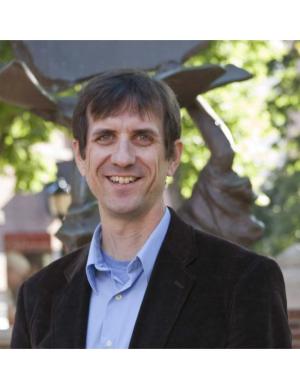
“Resisting cultured despair” is a phrase from feminist ethicist Sharon Welch that captured my imagination in graduate school. It is a phrase, or rather a disposition, that named for me my experience with the paralysis (and the privilege) that often prevent us from moving beyond critical description (what is going on) to responsive and responsible action in an unjust and messy world. For the past decade, resisting cultured despair has been an explicit feature of my teaching philosophy. It takes form in undergraduate, values-integrated seminars as well as in graduate servant leadership classes–courses designed to counter what religious education scholar Mary Elizabeth Moore decries as the “bifurcation of information and formation” in our pedagogies. In the end, I want the knowledge we generate together in the classroom to be catalytic rather than paralytic. I want my students to join the resistance, to become arc-benders in the moral universe. In its more common form, the initial despair sets in as the students grow in their awareness of the complex, long-standing, and interlocking nature of contemporary social ills–that is, as the students become “cultured.” So, conventional wisdom suggests we read together from the traditional canon of arc-benders. Yes, the challenges are daunting, the systems entrenched, but look at MLK! Ella Baker! Nelson Mandela! Dorothy Day! Cesar Chavez! to name just a few of the social change “saints” often invited into the curriculum. But herein lies the rub, and the less talked about but no less paralyzing dimension of cultured despair: the more we read of the moral virtuosos whose lives we count on to inspire our students (and, let’s be honest, ourselves), the easier it becomes to outsource our responsibility for changing the world to the luminaries, the set apart among us, the ones–certainly not me!–who by virtue of their extraordinary gifts and sacrifice can actually make a difference. As I continue to wrestle with transposing resistance to cultured despair from the soaring heights of a teaching philosophy to the grounded pedagogy of everyday teaching, I have found it helpful to adapt a strategy that has been effective in designing student writing assignments. One challenge familiar, I suspect, to most teachers is the student paper that tries, unsuccessfully, to emulate the style of and employ with earnest abandon the new vocabulary in the assigned course readings–the “try hards,” as my teenage daughter might say. My kneejerk response reflects this appellation: you are trying too hard, which, of course, is not helpful feedback. Whether crestfallen, contemptuous, or simply confused, student reactions to critiques of their writing include an implicit demand: ok, then show me what good writing that I am capable of looks like. So, we read the eloquent and professionally edited essays, speeches, and letters of the virtuosos for inspiration, and less for imitation. We pair these readings with review and discussion of a good (and sometimes a great) student paper from a past class. For me, forming students to resist cultured despair requires a similar approach. What this looks like in practice may vary, but for the past several semesters I have made an intentional effort to invite into the classroom recent alumni who are working in organizations that attend daily to the intersection of justice and care–organizations that amplify the leading causes of life in word and deed. The first-person stories of peers, like the reading of student writing, is a witness to a way of life as towards social justice, towards a life of “faithful service and ethical leadership,” as our university mission intimates. Their stories serve as tangible reference points throughout the semester, grounding our critical and conceptual analysis of issues threatening human flourishing. Three practical points to note: these conversations are shared, memorable, and easily adapted to flexible learning environments. These conversations with alumni ensure that we have a “shared text”–something that a required reading aspires to but often falls short of in practice. The shared, living texts prove easier to recall and work with in subsequent class sessions. And, as I discovered this year, the conversations can be hosted virtually in a way that, ironically, may enhance the “reality” of their stories. For example, alumni can give virtual tours of organizations we would never be able to visit in person during a class. There is, of course, nothing radical or new about bringing back alumni to tell their story–your alumni office will be thrilled to assist (and publicize). And as with any alumni “career talks,” the impact can be direct: the current student compelled to apply for a year of service with the organizations for whom the alumni work. But the pedagogical move, like so many, is not contingent on generating immediate, observable causal relationships. Rather, it is a recognition that in our classrooms, the invitation to change the world –as the most recent iteration of our (your?) university branding exhorts–cannot be delivered solely by those whose stories have been mythologized and anthologized. This has become increasingly clear in the current moment when the moral authority of past saints is simultaneously invoked and revoked by new voices demanding to be heard. Teaching resistance to cultured despair requires additional signposts and, likely, the identification of new paths. Partnering with recent alumni is a source of hope and accountability for me as I prepare to teach this fall, conscious of both the temptation to cultured despair and the rising culture of despair.
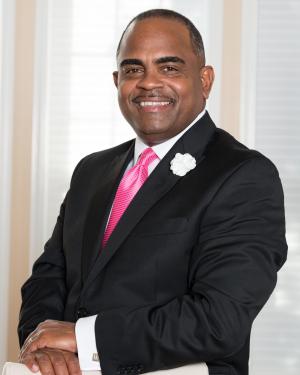
We can teach the ongoing struggle for civil rights by taking students to the current day struggle via Instagram and sacred sites. Who on Instagram is doing the work that the great ancestral photographers like Mikki Ferrill, Louise Martin, Moneta Sleet Jr., John Shearer and Gordon Parks did? One is Joshua Rashaad McFadden. His Instagram is liberative in every way. We can invite our student to share who they are following, while also inviting them to follow those doing the work of showing us the struggle. What this does is show the students the power of photography in the liberation struggle yet lives as it did in the 1950s and 1960s. Moreover it takes them out of the classroom and into the real world via a virtual photography feed. The second step in this process is taking student to sacred sites that are living. When you go to the field and experience the sites where the struggle occurred in your town or the town the student is living in, if they are taking the course online. Go and see, feel and hear the power of the sacred sites where the struggle was and is being waged. In the video below I take you to the sacred site where we in Atlanta honored the life of Rayshard Brooks. Rayshard Brooks was lynched by the Atlanta Police Department on June 12, 2020. The Wendy’s where the lynching occurred has become a sacred site of remembrance and resistance. I take you there in this video and you hear from one the leading modern day civil rights photographers alive today. Joshua Rashaad McFadden is someone you want to follow. May the videos speak for itself. http://www.joshuarashaad.com https://www.instagram.com/joshua_rashaad/ [su_youtube_advanced url="https://youtu.be/XpFNU0eKzwA"]